6 Things To Avoid So Your Ride Retains Its Value
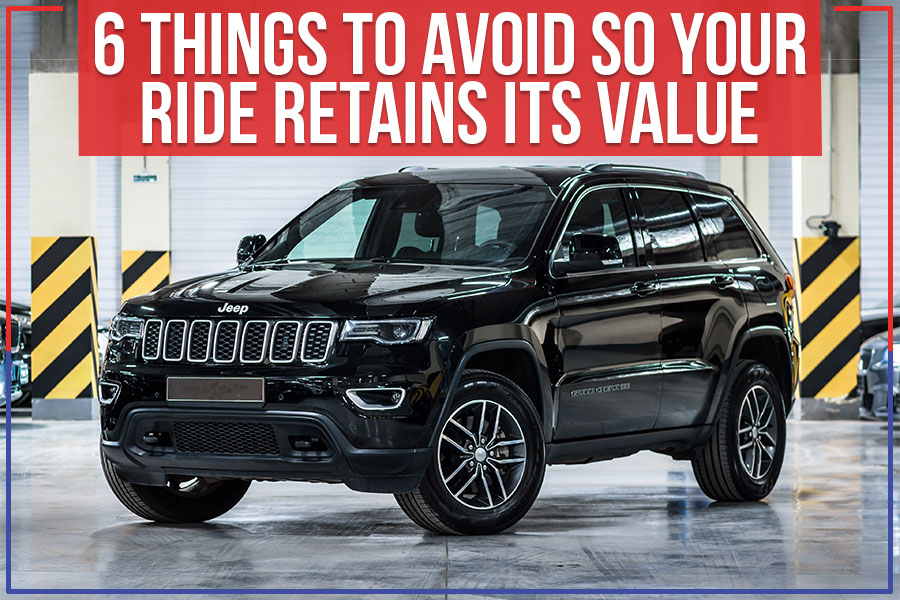
Key Takeaways
- A car loses its value due to depreciation
- However, you can make sure it retains its value at the point of sale by scheduling regular maintenance.
- Following some simple maintenance guidelines can help retain your car’s value.
- You should also avoid a few basic errors to ensure the car sale happens at a favorable price.
No one likes depreciation. It whisks away your car’s value almost as soon as you drive it off the lot. While there’s no way to prevent it altogether, there are ways to slow down depreciation. Here are six things to avoid so your ride retains its value for as long as possible.
1. Don’t Skip Maintenance
This is number one for a reason. Skipping oil changes, tune-ups, and other scheduled maintenance will shorten your car’s life and lower its resale value. A well-maintained car is more attractive to potential buyers and commands a higher price. Remember to keep copies of all maintenance records to show potential buyers that you’ve taken good care of the car.
2. Don’t Let the Interior Go
If you eat in your car or have kids who often ride along, the interior will inevitably get messy from time to time. However, try to keep it as clean as possible. A stained or ripped-up interior will make potential buyers think twice about purchasing your car, no matter how well the exterior looks. Make sure to thoroughly clean the interior before putting your car on the market.
3. Don’t Forget About Curb Appeal
Curb appeal is just as important for cars as it is for homes. A scratched or dented exterior will turn away potential buyers before they even take a test drive. If your paint job looks dull, consider getting a new coat before listing your car for sale. Giving your car a good wash and polish can go a long way!
4. Don’t Drive Like a Maniac
We all know people who love showing off their driving skills by speeding down back roads and taking sharp turns without slowing down first—don’t be one of those people! The stunts are dangerous and take a toll on your car over time. Fast driving and hard braking can cause premature wear and tear on your engine, tires, brakes, and suspension system, lowering your car’s resale value.
5. Don’t Modify Your Car
While adding aftermarket features may be tempting, resist the urge! Modifications almost always decrease a car’s resale value because they make it less attractive to potential buyers outside your niche interest group. In some cases, modifications may even void your warranty, costing you big bucks down the road.
6. Don’t Neglect Serious Repairs
If something breaks down in your car, get it fixed—simple as that! Neglecting necessary repairs will make your ride less enjoyable and decrease its resale value by signaling to potential buyers that you haven’t taken good care of the car.
How Depreciation Works
To put it simply, depreciation is the decrease in the value of an asset over time. Everything depreciates, including cars, houses, and appliances. When you buy a car, it’s only worth what someone is willing to pay for it. The second you drive your car off the lot, it loses value. A new car can lose as much as 20% of its value in the first year alone. And over time, that loss only accelerates.
There are several reasons why cars lose value as soon as they are driven off the lot. The main reason has got to do with supply and demand. Cars are mass-produced, so there is an overabundance of them, which drives down the price. On the other hand, there is always a demand for new cars, so dealers can charge a premium for them. In addition, cars also depreciate because they are subject to wear and tear. Every time you drive your car, it goes through a tiny bit of wear and tear. Over time, the wear and tear significantly reduce the value of your car.

How to Calculate Depreciation
There are different methods for calculating depreciation, but the two most common are the straight-line method and the declining balance method. The straight-line method subtracts the salvage value (the estimated value of the car at the end of its useful life) from the car’s price and divides it by the number of years in the car’s useful life. The declining balance method bases depreciation on a percentage of the original purchase price; typically, this percentage is double the straight-line rate.
Also, Read – Signs Your Car’s Radiator is Failing
Car Maintenance Measures that Help Retain its Value
How do you ensure you get top dollar when it comes time to sell? Here are a few car maintenance measures that help retain its value.
Change the Oil Regularly
One of the best things you can do for your car is to change the oil regularly. Most mechanics will tell you that you need an oil change every 5,000 miles. Some cars may be able to go longer, but err on the side of caution and get it done sooner rather than later. Not only will this help your car run better, but it also helps maintain its value.
Get Regular Tune-Ups
Tune-ups are essential because they help keep your car running smoothly and efficiently. By getting regular tune-ups, you can avoid bigger (and more expensive) problems down the road. Again, this helps with both the performance of your car and its resale value.
Wash and Wax Regularly
Regularly washing and waxing your car helps protect the paint job and keeps it looking shiny and new. When it comes time to sell, a well-maintained exterior will help fetch a higher price. So break out the hose (or take it through a drive-through car wash) once a week and give it a good scrubbing. Then break out the wax and give it a good shine. Your car will thank you for it!
By following straightforward vehicle maintenance and car service guidelines, you can retain your car’s value and avoid costly repairs down the road. Feldman CDJR of Clarkston, serving West Bloomfield, MI, is here to help you keep your car running like new with our expert service team.
Schedule a visit today, and let us take care of everything for you.
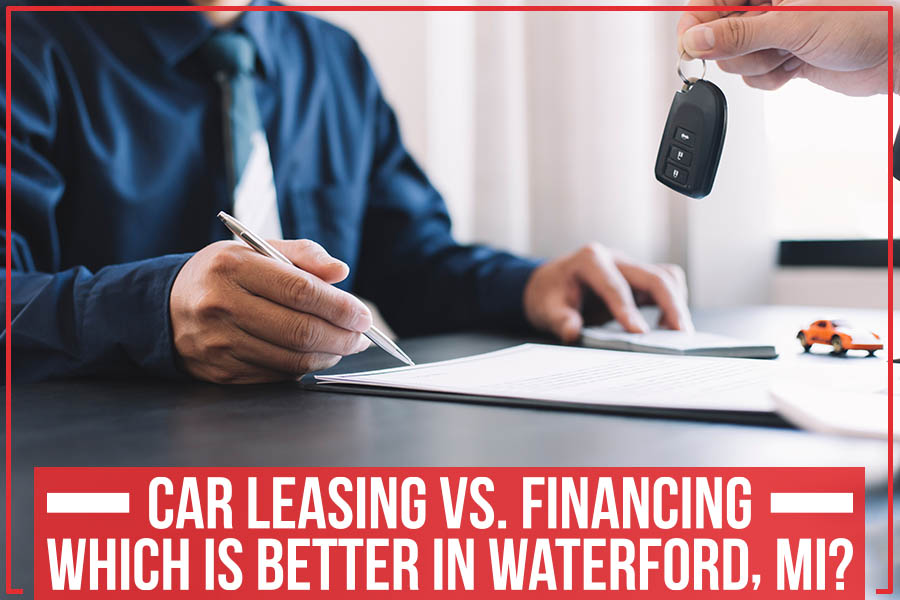
Key Takeaways:
- There are pros & cons to both car leasing and financing.
- Car leasing means you’re only paying for the depreciation of the vehicle over the term of the lease,
- While with the financing, you’re paying off the entire purchase price of the vehicle.
- Ultimately, the best option depends on your budget and needs.
When buying a car, one of the big decisions you’ll have to make is how to pay for it. Should you lease your car or finance it? Both options have pros and cons, so which is better depends on your circumstances. In this article, Feldman CDJR of Clarkston will break down the pros and cons of each option so you can settle on which is best for you. Keep in mind that this is just a general overview – for more specific advice, talk to an auto financing specialist.
Also, If you’re trying to figure out whether you should buy a Certified Pre-owned car from a dealership or not – Here’s our take on it!
Car Leasing: All You Need To Know
Alright, without further ado, let’s start with car leasing. Car leases are becoming increasingly popular, especially among young and first-time car buyers. If you’re thinking about leasing a car, here are a few things you need to know:
What Is A Car Lease?
A car lease is nothing but a long-term rental agreement. You make monthly payments to the dealership for the use of the vehicle, but you don’t actually own it. After the lease period, usually two or three years, you simply return the car to the dealership and start anew with a new vehicle.
What Are The Benefits Of Leasing An Automobile?
There’re several benefits to leasing a car rather than financing it. For one thing, leases typically have lower monthly payments than a traditional car loan. This is because you exclusively pay for the vehicle’s depreciation during the lease term rather than the entire purchase price.
Another benefit of leasing is that it offers more flexibility than buying. If you only need a ride for a few years or are unsure what kind of car you want, leasing can be a great option.
It’s also easier to get out of a lease than a car loan; if your circumstances change & you can no longer afford the monthly payments, you can simply return the car to the dealership.
What Are The Drawbacks Of Leasing A Ride?
There are some drawbacks to leasing as well. First, you’ll never own the car outright; at the end of the lease term, you’ll have to return it to the dealership.
Second, there are mileage restrictions; most leases limit you to 10,000 and 15,000 miles per year. You’ll have to give out a fee for each additional mile if you go over this limit.
Finally, leasing can be more expensive in the long run than buying a car outright. If you’re planning on keeping your car for more than a few years, or if you drive a lot of miles, buying may be the better option.
Car Financing: All You Need To Know
Well, the second option is to finance the car. Car financing has been in trend for quite a while and is chosen by most car buyers.
What Is Car Financing?
Alright, so what exactly is car financing? In simple terms, when you finance a car, you’re borrowing money from a bank or financial institution to pay for the vehicle. You then push monthly payments to repay the loan, plus interest.
What Are The Benefits Of Car Financing?
There are a few key benefits of car financing. First, it allows you to buy a more expensive car than you could if you were paying cash. You can buy a car outside your budget and spread the cost over a few years.
Another benefit of financing is that it can help improve your credit score. When you make timely monthly payments, it shows potential lenders that you’re a responsible borrower. This can be much more convenient if you ever need a loan for a major purchase, like a house.
Third, you might be able to snag up a lower interest rate on a car loan than you could get with a loan for personal needs. This is because car loans are considered secured loans, which means the car serves as collateral.
What Are The Disadvantages Of Car Financing?
There are a few disadvantages of car financing to keep in mind. First, you’ll have to pay interest on the loan, which will increase the overall cost of the car. For example, if you finance a $20,000 car at 5% interest for five years, you’ll pay a total of $21,600.
Second, the lender can repossess your car if you miss any payments or default on the loan. You don’t have to worry about this major risk with leasing.
Finally, once you pay off the loan, the car will be yours, and you’ll be responsible for all repairs and maintenance. With leasing, you can simply turn in the keys and walk away at the end of the lease term.
Car Leasing Vs. Financing: The Main Difference
So, to sum it up, the striking difference between car leasing and financing is that with a car lease, you’re only paying for the use of the car during the lease term, while with a loan, you’re paying off the entire purchase price of the car.
If you’re unsure which option is perfect for you, talk to your financial advisor or a car leasing expert. They’ll help you weigh all the factors and make the best decision for your unique situation.
Car Leasing Vs. Financing: Which Is Better for Me?
The answer to this question comes down to your individual circumstances. Both options have pros and cons that you’ll need to consider before deciding. But you can determine the best course of action by asking yourself a few key questions:
- What is my budget?
- Do I want to own the automobile outright?
- How long do I plan to keep the car?
- What is my credit score?
Based on your answers, financing may be the better option if you have a higher budget and are planning to keep the car for longer. Owning the car outright also gives you more freedom to modify it as you please. If you have a lower budget or are looking for a shorter-term solution, leasing could be the way to go. And if your credit score isn’t perfect, you may have an easier time getting approved for a lease than a loan.
At the end of the day, there’s no right or wrong answer when it comes to leasing vs. financing a car. It all depends on your personal needs & circumstances.
Here’s How Feldman CDJR of Clarkston Can Help!
If you’re still unsure whether you should go for a car lease or auto finance – our team of experts at Feldman CDJR of Clarkston, serving Waterford, MI, can help. We’ll work with you to figure out what type of vehicle you need and help you find the perfect lease or loan option.
Browse our online inventory or contact us today to get started!
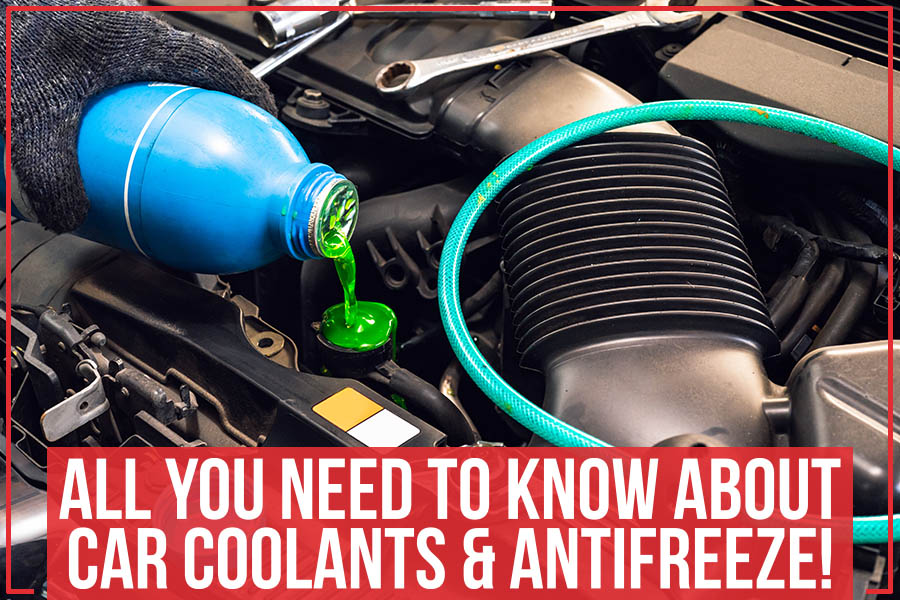
Key Takeaways:
– Coolant and antifreeze are two terms for the same thing.
– Coolant is a mixture of water, antifreeze, and chemicals that helps keep your engine cool.
– Antifreeze contains glycol, which lowers the freezing point of water.
– IAT antifreeze is the most common antifreeze made from inorganic chemicals.
– OAT antifreeze is a newer type of antifreeze that uses organic chemicals.
– Check your owner’s manual or ask your mechanic which type of coolant is best for your car.
– Check your coolant level regularly and top it off if necessary.
The terms coolant and antifreeze are often used interchangeably. Coolant is a mixture of distilled water & glycol that helps keep your engine from overheating by transferring heat away from the engine. Antifreeze is an ethylene glycol-based liquid that helps protect your engine from freezing in cold weather. They perform the same operation but vary in how they are made and where a combination of the two is most effective. Let’s explore what you should know about them.
How Does the Coolant Work?
The coolant keeps your engine at a consistent temperature. It does this by absorbing the engine’s heat and then dissipating it into the air. The coolant is usually circulated in separate pipes through the engine by the water pump. As it moves, it picks up heat from the engine and then carries it to the radiator.
The radiator is a large metal container with a series of small tubes running through it. The coolant flows through these tubes, and as it does, the heat is dissipated into the air passing over the radiator. Once the coolant has cooled down, it is circulated back through the engine to absorb more heat.
How is the Engine Coolant Made?
The coolant contains many chemicals that help it do its job more effectively. The most important of these is the antifreeze. Antifreeze lowers the coolant’s freezing point, which means it can absorb more heat before it freezes. It also raises the coolant’s boiling point, dissipating heat more effectively. The coolant is a mixture of water and antifreeze, and the ratio of these two ingredients can differ depending on the climate. In colder climates, a higher percentage of antifreeze is used to prevent the coolant from freezing.
Benefits of Antifreeze
There are several benefits that antifreeze provides. Firstly, as mentioned above, it lowers the freezing point of the coolant. It means that the engine can operate in colder temperatures without the risk of the coolant freezing and damaging the engine. It raises the coolant’s boiling point, dissipating heat more effectively and preventing the engine from overheating.
Another benefit of antifreeze is that it inhibits corrosion. The coolant circulates through the engine and helps keep it clean and free of rust. Antifreeze contains chemicals that protect the engine from corrosion, which can significantly extend the engine’s life.
Drawbacks of Antifreeze
The main drawback of antifreeze is that it is poisonous. If you drink coolant, it can cause serious health problems. That’s why keeping coolant out of reach of children and pets is important. Be careful not to spill coolant on yourself or the ground because it can harm the environment.
Choosing the Right Coolant
The coolant you use in your car depends on your area’s climate. If you live in a cold climate, you’ll need antifreeze in addition to the aqueous coolant because it comes with a higher percentage of alcohol to prevent freezing. And we all know that alcohols do not freeze below the typical freezing point of pure water – so the antifreeze, acting as a necessary impurity, keeps the mixture liquid.
In hotter climates, you’ll only need a coolant with a higher percentage of water in it to prevent overheating. You can also buy all-season coolants that work well in hot and cold climates, but as we’re talking, Michigan is headed towards the fall, meaning your car will be better off with a coolant & antifreeze. Refer to your owner’s manual to see what coolant is ideal for your car.
How to Check Your Coolant Level?
Check your coolant level regularly to ensure it doesn’t get too low. If the level is too low, the engine will not be properly cooled and could overheat. If the level is too high, the coolant will not be able to circulate properly and could cause the engine to overheat. You should check the coolant level in your car at least once a month. To check the level, open the hood of your car and locate the coolant reservoir. The reservoir is usually made of clear plastic and has a fill line that shows the maximum level the coolant should reach. If it’s below the fill line, add more coolant until it reaches the line.
How to Flush and Fill Your Coolant?
It’s important to flush and fill your coolant every few years to eliminate any rust, sediment, or other waste that may have built up in the system. To do this, you’ll need to drain all the old coolant from the system and add new coolant. If you can’t do it yourself, take your car to a mechanic, and they’ll do it for you. You must flush the coolant every two years or 30,000 miles to prevent the engine from rusting.
What is Radiator Fluid?
Radiator fluid is a blend of water and antifreeze that helps keep your engine cool. Radiator fluid is another name for coolant. The water helps keep the temperature down, and the coolant prevents the water from freezing. You should check your radiator fluid level regularly to ensure it’s full. If it’s low, you can add more.
Check out our blog to discover 4 signs that indicate your radiator is failing.
What are IAT and OAT Antifreeze?
IAT and OAT are two types of antifreeze. IAT, or Inorganic Additive Technology, is the traditional type of antifreeze that’s been around for many years. It uses silicates to protect your engine from corrosion. OAT, or Organic Acid Technology, is a newer type of antifreeze that uses organic acids to protect your engine from corrosion.
OAT antifreeze is more expensive than IAT antifreeze, but it lasts longer. OAT antifreeze can last up to five years, while IAT antifreeze needs to be replaced every two years.
Feldman CDJR of Clarkston, serving Troy, MI, is ideal for car services because we offer top-notch car care services designed to meet the needs of our customers. We have certified technicians who can provide quality services at an affordable price. We offer numerous services, including oil changes, tune-ups, and brake repairs. So, if you seek a trustworthy place to take your car for service, look no further than Feldman CDJR of Clarkston!
Schedule a Service Appointment with our Chrysler, Dodge, Jeep, and RAM service center today!
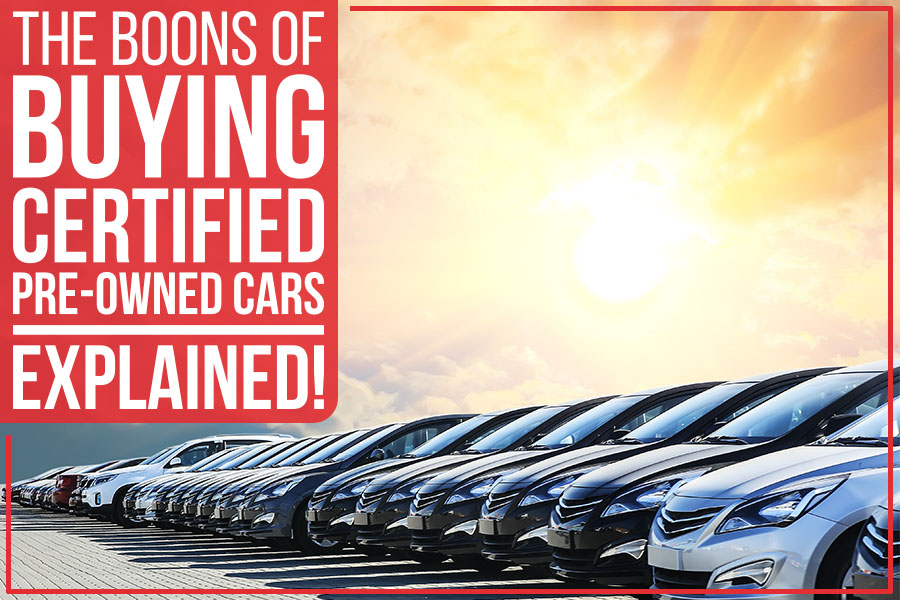
Crazy things can happen when you’re buying a car. You might spend hours at the dealership, only to walk away with a brand-new vehicle but not exactly what you wanted. Or you buy way beyond your means just to get stuck with installments. Or worse, you could spend way too much money on a car that’s not even new – and dog-eared, for that matter!
Fortunately, there’s a better way to buy a car – and it doesn’t involve heading to a far-flung dealership on the other side of town to empty your bank balance. You can buy a certified pre-owned (CPO) car from virtually anywhere. But what is CPO exactly? And is it worth the extra money? Keep reading to find out!
What is a CPO Car? –
Certified pre-owned cars are late-model vehicles that have been inspected, reconditioned, and certified by the manufacturer. A car must meet certain age, mileage, and condition requirements set forth by the manufacturer to get the required certification.
CPO cars also come with extended warranties that cover repairs for a certain period or mileage (usually 1-3 years/36,000-100,000 miles). And in some cases, CPO cars may even have other benefits like 24/7 roadside assistance.
Why Should First-Time Buyers Purchase a CPO Vehicle? –
First-time buyers may find certified pre-owned vehicles a great option because they can get a late-model car at a used-car price. If you need the features of a brand new vehicle while watching over your budget and without breaking the bank, a CPO vehicle is right up your alley.
What Are the Downsides to Buying a CPO Car? –
The biggest downside to buying a certified pre-owned car is that you may pay more than you would for an equivalent non-certified used car. In addition, certified pre-owned cars may not have all the bells and whistles of a brand new model (like the latest safety features or infotainment system).
Benefits of a CPO Car –
1. Warranty –
The most significant benefit of certified pre-owned cars is that they come with a warranty. This means that if something goes wrong with the car, you won’t have to pay for repairs out of your pocket.
2. Better Resale Value –
Certified pre-owned cars also hold their value better than non-certified used cars, so you can feel confident that you’ll get a satisfactory return on your investment if you decide to sell or trade-in your car down the road.
3. Insurance –
Rigorous inspections aren’t the only reason CPO cars are a smart buy — they also come with benefits like reduced insurance rates. Insurance companies consider them a stable option, less risky than used cars, and more prone to frequent repairs and breakdowns.
If you’re in the market for a certified pre-owned car, Feldman CDJR of Clarkston, serving Rochester Hills, MI, is the place to be. With a vast selection of certified used car models and brands to choose from, we’re confident that we can find the perfect car for your needs. So, what are you waiting for?
Explore our collection today and find the perfect CPO car for you!
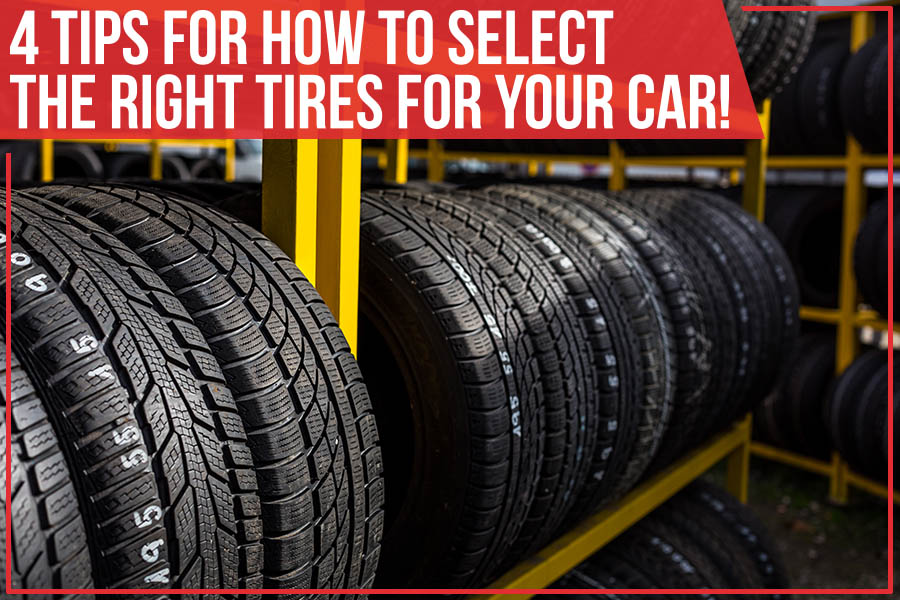
Selecting the best tires for your car can be a daunting task. With so many options available, how do you know which ones are right for you?
Here are four tips by Feldman CDJR of Clarkston, serving Holly, MI, to help make the process easier. These tips will help you find the perfect set for your vehicle if you’re looking for all-season or performance tires.
So, why wait – get started right away on finding the perfect set of tires today!
When Should You Upgrade or Replace Your Tires?
One of the most common questions is, “When should I upgrade or replace my tires?” It’s a great question and one that doesn’t have a single answer. There are several factors you need to consider when making this decision, such as:
The Type of Vehicle You Drive:
If you drive a performance car, you’ll likely need to replace your tires more often than someone who drives a sedan or SUV. That’s because performance tires are designed for high-speed driving and hard cornering and don’t last as long as regular passenger car tires.
The Way You Drive:
If you’re an aggressive driver who likes to push your car to its limits, you’ll have to replace your tires as often as not as someone who drives more conservatively. That’s because aggressive driving wears down tires faster.
The Roads You Drive on:
The best way to avoid getting your tires damaged by potholes is to keep them well-maintained. Many people who live in areas with more road hazards will have their tires wear down faster than someone living on an otherwise pristine highway.
These accidents are common and can cause extensive damage if not dealt with properly at first glance.
Your Budget:
You might have a limited budget, but that doesn’t mean you should skimp on tires. The right type can make all the difference in how well your car handles and performs for its intended use- whether it’s commuting or running errands around town!
Tips To Find the Best Tires for Your Car:
Consider Your Driving Needs:
The first step is to consider your driving needs. Are you looking for all-season tires or performance tires? Depending on your needs, the type of tire you’ll need will vary.
Do Your Research:
Research is key when it comes to finding the perfect set of tires. You’ll want to read reviews and compare prices before making a decision.
Get a Professional Opinion:
Refer to a professional if you’re still unsure about which tires to choose. A mechanic or car expert can help you select the right tires for your vehicle.
Get the Right Tire Pressure:
After you’ve installed your new tires, be sure to check the tire pressure. That is important for both safety and performance. Under-inflated tires can lead to accidents, and over-inflated tires can cause premature wear.
The Bottom Line:
So you’re looking to replace your tires? Of all the things to think about when buying tires, our guide will make it easier. You want something that lasts and handles well in all weather conditions; however- don’t forget about the cost (you can find affordable options).
With these four tips in mind, you can confidently choose the best tires for CSV. If you’re looking for a Chevrolet dealer near Holly, MI, Feldman CDJR of Clarkston is here to help.
Schedule a test drive today and watch how our selection of new and used vehicles can fit your needs!
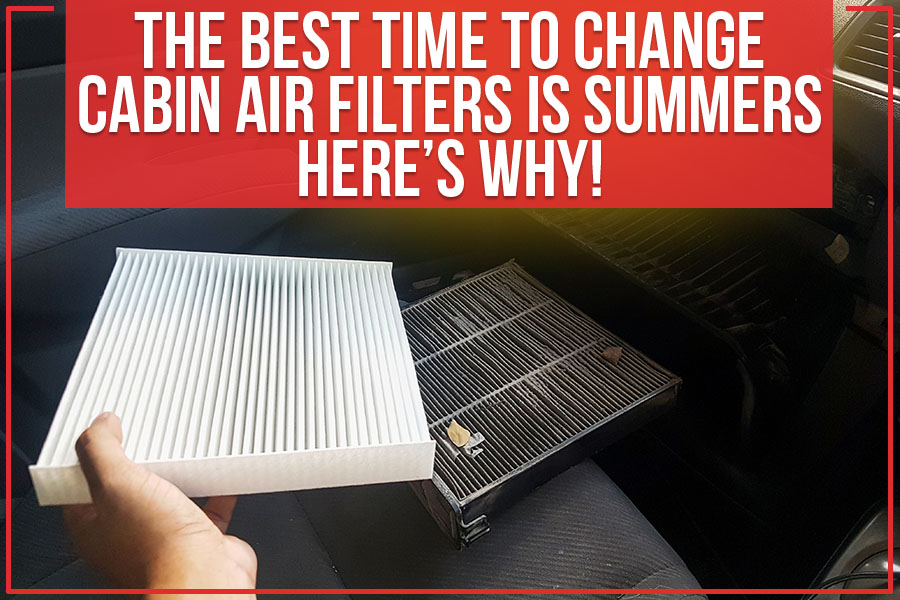
When it comes to car air filters – cabin & engine, there’s a lot of debate over the best time to change them. Some say that you should do it in the fall when the leaves change color and the weather gets colder. Others swear by changing them in the spring when flowers bloom, and everything is starting to come back to life. But what if we told you all that the best time to change the filters was during the summer?
It may not be what you were expecting to hear, but there are several good reasons why this is so! Keep reading this blog by Feldman CDJR of Clarkston to find out more.
Reason 1 – Pollen and Allergens
One of the main reasons you should change your cabin air filter during the summer is all the pollen and other allergens floating around in the air. If you suffer from allergies, you know how miserable they can make you feel. All that sneezing, itchy eyes, and congestion can really put a damper on your summer fun.
But did you know that swapping your car’s air filter can help reduce some of these symptoms? That’s right – by trapping pollen and other allergens before they have a chance to enter your car, an air filter can help make your ride a little more comfortable.
Reason 2 – Dust and Dirt
Another good reason to change your air filter during the summer is because of all the dust, grime, and dirt that gets kicked up on roads. When it’s dry out, there’s nothing to hold all that dust and dirt down, so it just gets kicked up into the air where it can easily enter your car through the vents.
And let’s not forget about all the construction that goes on during the summer. Whether it’s road work or construction at a nearby home or business, there’s always some sort of construction project during the summer months. And you know what that means – more dust and dirt in the air!
By changing your air filter regularly, you can help ensure that all this dust and dirt doesn’t end up in your lungs.
Reason 3 – Your AC Works Harder in The Summer
Your car’s AC has to work harder in the summer to keep you cool, which means running more often. And when your AC runs more often, it’s pulling more air through the vents – and that air must pass through the cabin air filter first.
So, if your cabin air filter is already full of dust and dirt, it will be harder for your AC to do its job. By changing your air filter regularly, you can help ensure that your AC doesn’t have to work as hard, which signifies it will last longer and run more efficiently.
Give Your Car Some Air to Breathe with Feldman CDJR of Clarkston
Feldman CDJR of Clarkston, serving Fenton, MI, is ready to help you with all your automotive needs. Is your cabin air filter in need of a change? Schedule an appointment with our service department today, and we’ll be happy to help you out.
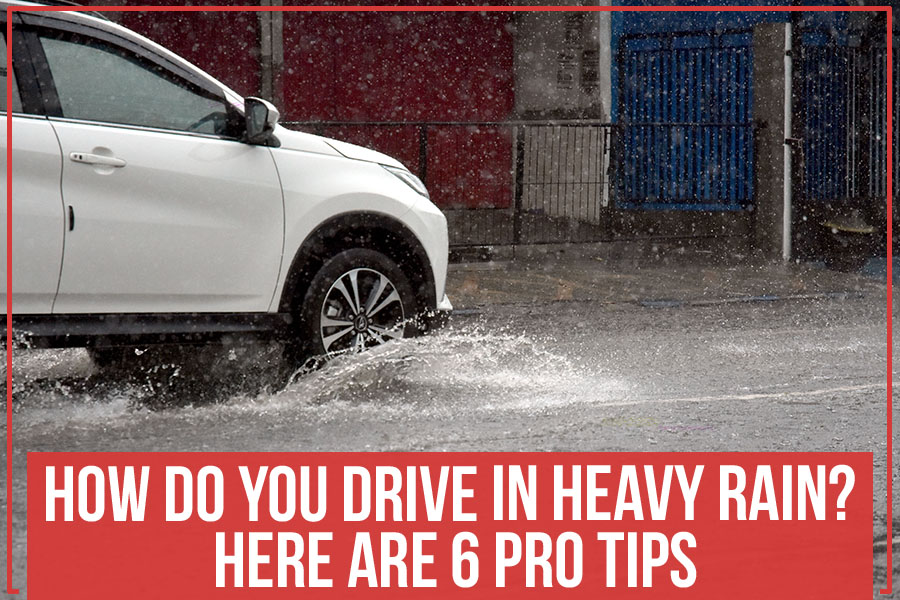
We’ve all been there. It’s a rainy day, and you have to drive somewhere. The roads are slick, have poor visibility, and increased braking distance. How do you make sure that you get to your destination safely? Check out these pro tips for driving in super heavy rain!
Ensure Your Windshield Wipers Are Working
While taking care of the windshield wipers may sound like a no-brainer for many, you’d be surprised how often drivers forget to check them until they’re already on the road. Ensure your windshield wipers are functional and in good condition before driving in heavy rain. Replace them every 6 to 12 months and apply a windshield repellant to help further improve your visibility.
Reduce Your Speed and Increase Following Distance
Maintaining manageable speeds gives you time to react to any potential hazards on the road. Remember also to increase your following distance. The general rule is to double the space between you and the car in front of you. A safe distance between your car and the vehicle ahead gives you ample time to brake if necessary.
Avoid Driving Through Large Puddles of Water
You never know how deep a puddle of water may be. It’s best to avoid driving through them if possible. Keep an eye out for the car ahead, notice how deep the puddle is, and plan your route around it. If driving through a puddle is unavoidable, go slowly to avoid creating a large splash.
Be Aware of Hydroplaning
Hydroplaning occurs when the car tires lose contact with the road, and you essentially start driving on a thin layer of water. This can be extremely dangerous as you can lose control of your car. If you start to hydroplane, ease off the gas pedal and do not break. Start steering in the road’s direction until you regain traction.
Check Your Tire Tread
Please ensure your tires have enough tread before driving in heavy rain. Worn-out tires will decrease your traction on wet roads and make it more challenging to handle your car. You can check your tire tread by inserting a penny into the tread. If you can see Lincoln’s head, it’s time for new tires.
Keep Your Lights On
In some states, the law requires you to keep your headlights on anytime the windshield wipers are in use. This allows other drivers to see you quickly and makes it easier for you to see. You should also clean your lights before driving in heavy rain so they aren’t obscured.
Driving through puddles of water can be challenging, but with the right tips and knowledge, you can make it through safely. If you experience car trouble after rainfall, don’t hesitate to schedule a car maintenance and repair service with Feldman CDJR of Clarkston, serving Grand Blanc, MI, today. We’re here to help you get back on the road quickly and safely.
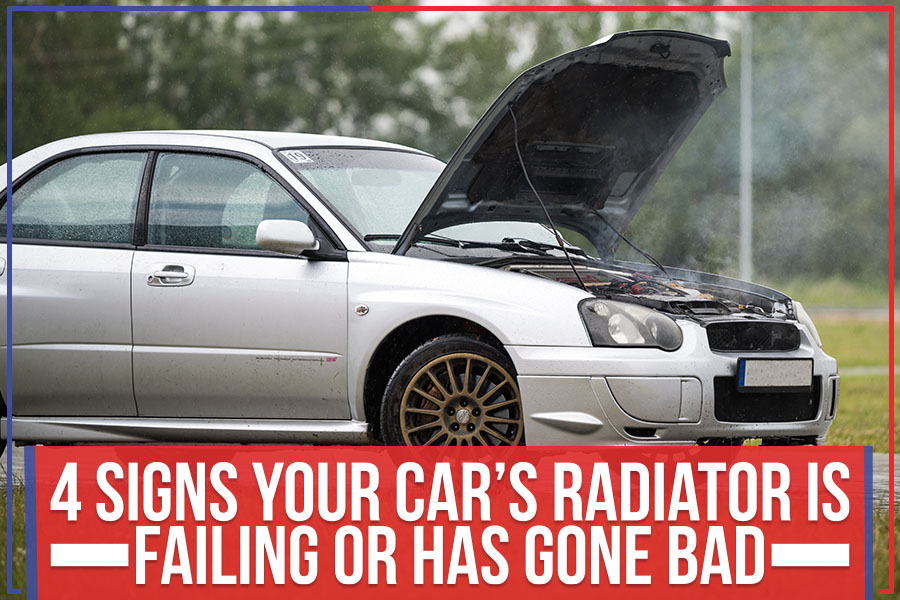
There are a few suggestive signs that you have a bad or failing radiator. If your car is overheating, there’s a puddle of green fluid under your vehicle, or if your car is making an abnormal noise, then it’s likely that you have an automobile radiator issue.
Detecting these radiator problems early is crucial. If you catch the problem early, you may have the option of radiator flushing. However, if you wait too long, then you may need to replace the entire radiator.
Stay with us as we help you figure out the signs of a bad radiator.
1. Your Temperature Gauge Rises Quickly:
A radiator problem is often first detected when the temperature gauge on the dashboard rises quickly into the hot range or enters the red zone.
Of course, there are other reasons your temperature gauge may increase. It could be a problem with your thermostat or water pump. But, if radiator coolant leaks are paired with the rising temperatures, it’s almost certainly a radiator issue. A clogged radiator with damaged radiator fins could also be a significant contributing factor to a temperature increase.
2. Radiator Coolant Leaks:
Radiator coolant is a flowy, greenish liquid (sometimes pink, orange, or yellow) that circulates through your radiator to help keep your engine cool.
Leaking radiator fluid is one of the most common signs of radiator damage. If you notice a puddle of green, sweet-smelling fluid under your car, chances are it’s coming from your radiator.
The radiator coolant may be leaking from a hole in the radiator itself or a loose hose. You can monitor your radiator fluid level by checking the overflow tank. Your radiator coolant levels will be low if you have a radiator leak.
3. Discolored Radiator Coolant:
Automobile radiant coolant passes through radiator hoses to the radiator. Over time, it can become discolored due to dirt, rust, and other debris. If you notice your radiator coolant is darker than usual and more viscous, it’s probably time for a radiator flush. Radiator flushing will remove all the debris and rust from your radiator and help to ensure it’s working correctly.
You might be tempted to try radiator flushing on your own, but it’s best to leave it to the professionals. Radiator flushing is a delicate process; if not done properly, it can damage your radiator.
4. Blocked and Damaged Radiator Fins:
An automobile radiator is located in front of the engine. It consists of a series of metal fins that help to dissipate the heat. Over time, these radiator fins can become clogged with debris and dirt, which reduces their effectiveness.
What’s more, gravel and other road debris can damage the radiator fins, causing them to bend and break. It reduces the radiator’s ability to dissipate heat and can cause other problems as well. To avoid damaging the radiator fins, you must be careful with the water pressure and volume when radiator flushing.
Conclusion:
Replacing an automobile radiator is a costly affair. Radiator replacement costs can be as high as $1000. Therefore, car owners turn to radiator flushing and radiator fins repair as radiator maintenance measures. However, radiator flushing alone will not solve all radiator problems.
You may need to replace your radiator if it is old, has radiator coolant leaks, or highly damaged fins.
Feldman CDJR of Clarkston, serving Rochester Hills, MI, can help you with radiator diagnosis and repair. Bring your car to us and leave radiator problems in the past.
7 Signs It’s Finally Time To Buy Yourself A New Ride
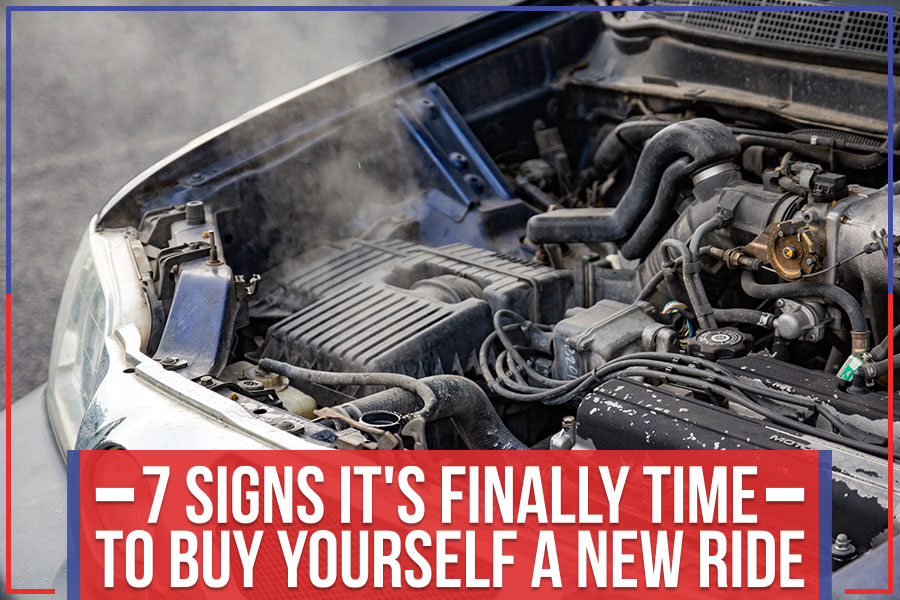
It’s not always easy to know when you need to buy a new car. Sometimes you might feel like your current car is too small or too old, while at other times the problem might be more serious, like constant mechanical problems. No matter the reason, if you’re starting to think about buying a new car, some signs will let you know it’s time. Keep reading this blog post by Feldman CDJR of Clarkston to learn more!
Signs You Need a Car!
1. Constantly Taking It for Repairs?
If you constantly have to take your car into the shop for repairs, it might be time to start brooding about purchasing a new one. Not only can auto repairs be expensive, but they can also be a huge hassle. If your car is starting to feel more like a money pit than anything else, it might be time to start test driving a new one.
2. You Want More, Don’t You?
Another sign that you might need a new car is if your current car doesn’t seem to fit your needs anymore. Maybe you’ve started a family and need something bigger, or maybe you’ve downsized and don’t need something so big anymore. Whatever the reason, if your car isn’t meeting your needs, it might be time for an upgrade.
3. Is Your Car Getting Old?
If your ride is starting to show its age, it might be time for a new one. Things like rust, dents, and scratches are all cosmetic problems that you can fix, but if your car has mechanical problems, it might be time to start thinking about getting a new one.
4. You’re Tired of the Same Old Thing
Even if your car runs well, you might be ready for something new. If you’re just tired of driving the same old car, it might be time to trade it in for something new. After all, your car should make you happy; if it’s not doing that anymore, it might be time for a change.
5. You Need More Space
As your life changes, your car needs might change as well. If you’re planning on starting a family or need more space for cargo, a new car might be the right choice. Just make sure to do your research and find a vehicle that will meet all of your needs.
6. Your Ride is Costing You Too Much Money
If you’re spending more on repairs than you would on a monthly car payment, it might be time to let go of your aging car. A new car might cost more upfront, but it will save you money in the long run.
7. You Want to Save The Environment
If you desire to be more eco-friendly, you might want to consider getting a new car. Newer cars are much more fuel-efficient than older models, so you’ll save money on gas and help the environment at the same time.
Feldman CDJR of Clarkston Can Help You!
Feldman CDJR of Clarkston, serving Holly, MI, is your go-to dealership for all things Chrysler, Jeep, Dodge, and Ram. We have a wide selection of new and pre-owned vehicles to choose from. Our knowledgeable staff will be happy to help you find the perfect new car for your needs. Come see us today!
Can Public Transport Compete With The Private Car?

When it comes to getting around, there’s no doubt that the private car is king. But could public transport ever compete? Recent studies have shown that in some cases, public transport can be faster and more convenient than taking your car. But is it as flexible and secure, and can it compete with the advantages and value of a private car when it comes to traveling? Moreover, how eco-friendly is public transport exactly?
This post by experts from Feldman CDJR of Clarkston, an authorized CDJR dealership, will discuss the pros and cons of public transport and compare them with the value offered by private cars. Then you can decide for yourself which is the best option for traveling. Read on!
Pros of Public Transport
Pros of Public Transport over private cars when it comes to traveling include:
It’s Inexpensive
You don’t have to maintain or purchase a vehicle when using public transport. The fares are also generally lower than the cost of gas and parking.
It Reduces Traffic Congestion
More individuals using public transport means fewer vehicles on the road, which reduces traffic congestion.
It’s Comfortable
You can sit back and enjoy the travel without worrying about traffic, directions, or finding a parking spot.
Cons of Public Transport
Following are some cons of traveling on public transport.
It’s Not Too Eco-Friendly
Buses and trains may be purported to produce less pollution and help keep the environment clean, but the truth is that they do run on gasoline & diesel. Comparatively, hybrid & EV usage is proving more eco-friendly!
It’s Not Always Convenient
Public transport can be infrequent, slow, and inconvenient, especially if you’re trying to get to a specific place at a specific time.
It Can Be Crowded
Buses and trains can be crowded during peak times, making for an uncomfortable ride.
It’s Not Door-To-Door
You may have to walk to and from bus stops or train stations, which can be a hassle if you carry heavy bags or travel with young children.
It Doesn’t offer Privacy
When you’re on public transport, you’re near other people, which can be uncomfortable for some folks.
Why Are Public Cars Still The Best Option?
Overall, the private car is still the better choice for most people, as it offers more convenience, comfort, and flexibility. Here are some advantages of private cars.
It Offers Convenience
The private car is still the best option for those who want convenience. You don’t have to worry about schedules or routes with a private vehicle. You can go wherever you want, when you want.
It’s More Comfortable
Another advantage of the private car is that it’s more comfortable. You can relax in your own space and don’t have to share it with strangers. You can also control the temperature, music, and other factors to make your ride more comfortable.
It’s More Flexible
The private car is also more flexible than public transport. If you need to make a detour or change plans, you can do so without worrying about disrupting your schedule or missing your stop.
When traveling, owning a private car instead of public transport is still the best option. People can now buy hybrids or EVs that are more in touch with curbing pollution – the US market is thriving!
Are you looking for a car that suits your eco-friendly resolutions? Feldman CDJR of Clarkston, serving Fenton, MI, can help. We have the best new and used cars for sale. Check our inventory!









